 By Gazette Staff By Gazette Staff
July 10th, 2025
BURLINGTON, ON
One of the most common crimes civilian police oversight agencies investigate is sexual assault committed by police officers — a “profoundly disturbing, largely hidden problem in Canada,” says Danielle McNabb.
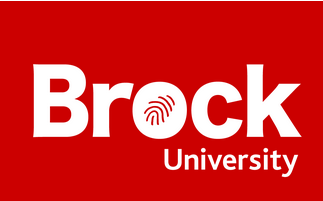 Although agencies such as Ontario’s Special Investigations Unit (SIU) are empowered to be arm’s-length investigators, police sexual assault cases tend to be dropped, rarely result in criminal charges if examined and rarely result in convictions, according to the Brock University Assistant Professor of Political Science. Although agencies such as Ontario’s Special Investigations Unit (SIU) are empowered to be arm’s-length investigators, police sexual assault cases tend to be dropped, rarely result in criminal charges if examined and rarely result in convictions, according to the Brock University Assistant Professor of Political Science.
“We’re trying to get a better understanding of why the rate of criminal charges is so low,” she says. “What are the barriers civilian police oversight agencies face? Do agencies in different provinces face distinct challenges?”
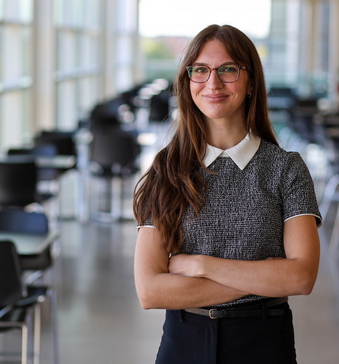 Danielle McNabb, Brock University McNabb and her team aim to answer these and other questions with funding from the Social Sciences and Humanities Research Council of Canada (SSHRC).
In this latest round of funding, announced Wednesday, July 9 by Minister of Industry and Minister responsible for Canada Economic Development for Quebec Regions Mélanie Joly, Brock University was awarded $7 million for faculty-led research projects.
Included in the announcement is a $2.5 million Partnership Grant for a project, “Building a Pan- Canadian Community of Practice: The Creating Opportunities through Physical Literacy for All Newcomer Children and Youth (CO-PLAY) Network,” led by Associate Professor of Child and Youth Studies Matthew Kwan.
Kwan, who is also the Canada Research Chair in Youth Mental Health and Performance, and his team are creating a national community that will engage newcomer children and youth in physical activities so they can develop greater physical literacy.
SSHRC also awarded Brock University faculty researchers 14 Insight Grants and 10 Insight Development Grants.
“Brock University’s results are particularly robust this year with our highest number of successful SSHRC Insight Grants in a single competition,” says Acting Vice-President, Research Michelle McGinn. “This positive outcome recognizes the relevance and strength of our research in addressing societal challenges and improving lives.”
In their five-year project, McNabb and Kate Puddister, Associate Professor of Political Science at the University of Guelph, are focusing on civilian oversight agencies across Canada.
They plan to examine closed directors’ reports, interviews, surveys and policies related to police sexual violence to compare how various agencies respond to complaints of police sexual violence and carry out their investigations.
“Our research aims to establish best practices for investigating police sexual violence, such as ensuring that complainants are treated in the most respectful, trauma-informed way possible,” says McNabb.
Chris Bittle, Member of Parliament for St. Catharines, says McNabb and Kwan’s projects are examples of how Brock University is making a difference locally and nationally.
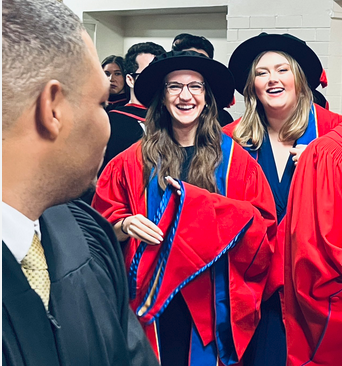 Danielle McNabb, on the left, gowned and ready to receive her Phd “The various projects receiving support from the Insight Program speak to the talent of the Brock University research community,” he says. “These projects will make significant inroads in children’s health and well-being and the other areas included in this impressive list.”
A full list of Brock University’s SSHRC funding recipients announced Wednesday, July 9, is available online.
The federal government’s Insight Grants program supports research excellence judged worthy of funding by fellow researchers and/or other experts. The research can be conducted individually or by teams.
The Insight Development Grants program supports the development of new research questions, experimentation with new methods and theoretical approaches and ideas.

 By Gazette Staff By Gazette Staff
July 1st, 2025
BURLINGTON, ON
The Halton Regional Police Service released their 2024 report. This year it was an online report only.
The story this year is set out in a number of graphics:

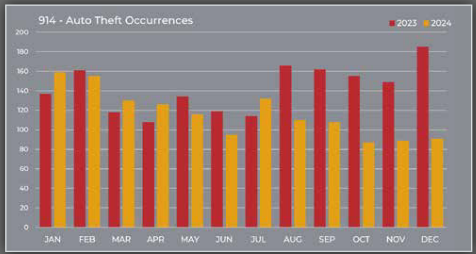 Auto theft occurrences.  Break and Enter Occurrences
Regional Statistics:
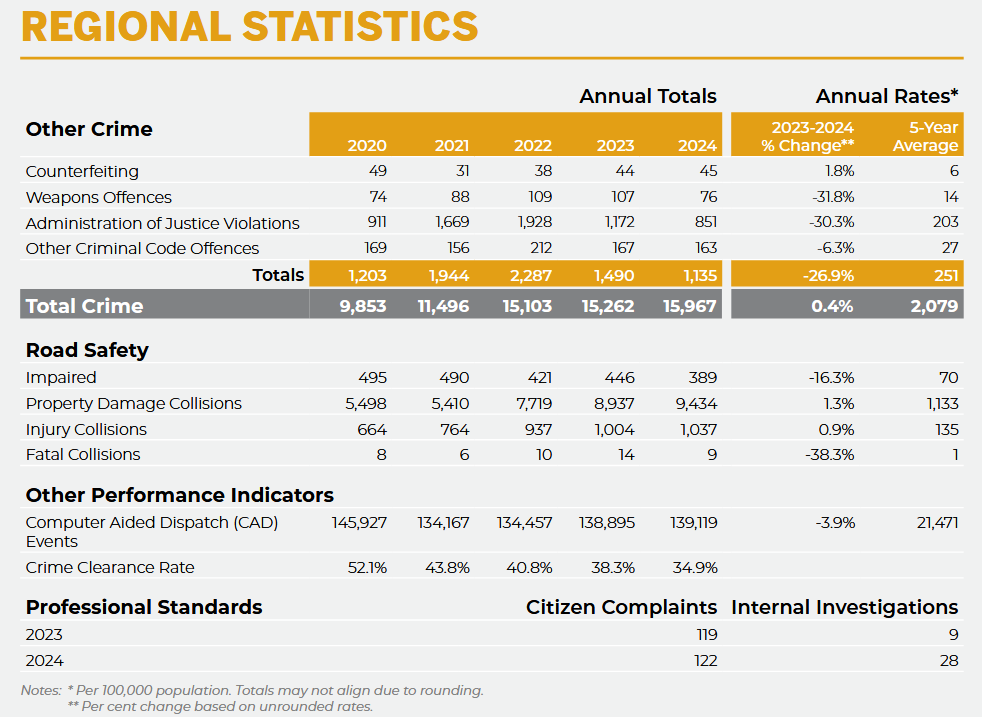
Social media:
As the social media landscape continued to evolve through 2024, so too did the Halton Regional Police Service’s (HRPS’) online presence. To ensure followers have quick and easy access to the information they want and need, the HRPS reimagined its X (formerly Twitter) accounts in July @HaltonPolice became the official channel for HRPS news, and existing District accounts were rebranded to provide tailored content on priority safety and well-being issues: traffic (@HRPS_Traffic) and community (@HRPS_Comm).
As of December 31, 2024, the three X accounts had a combined following of 181,256. Metrics for all HRPS social media accounts in 2024 are as follows:

Crime Stoppers:
Now in its 36th year, Crime Stoppers of Halton is an independent, non-profit, registered charity that helps solve crimes by taking tips from anonymous sources. A tip is any information that a member of the public is aware of that may help law enforcement prevent or solve a crime.
Countless criminals are brought to justice every year as a direct result of anonymous tips. A tip can be about anything – drugs, theft, child abuse, human trafficking, terrorism, escaped criminals, and more. As a resident of Halton, you are encouraged to keep a watchful eye on your community and to report suspicious activity when seen.
Your call or text is anonymous and the appropriate officials will investigate all tips received.

 By Pepper Parr By Pepper Parr
June 18th, 2025
BURLINGTON, ON
It is a question that is being asked at almost every level of society.
 They are alienated, depressed, struggling to find a direction – they can’t get out of the circumstances they are in on their own. Can we reconnect a generation? A mental health crisis is gripping young people, with rates of depression, anxiety, and loneliness rising. As social bonds fray and digital life deepens isolation, experts are sounding the alarm and demanding action.
Numerous organizations are beginning to explore the complex drivers of youth wellbeing, highlighting opportunities to rebuild social ties, foster resilience, and develop lasting strategies to improve the mental health of young people.
The Gazette would like to hear what people in Burlington feel about this issue and invite them to leave their views in our comments section, which you can access at the bottom of this story.
The politicians talk about it; it is hard to identify anything they have done that is making a difference.
Parents feel lost as they cope with children who have to deal with being left out – day in and day out.

 By Staff By Staff
June 18th, 2025
BURLINGTON, ON
Exciting changes are underway at Alton Branch of the Burlington Library.
A Maker Station—a brand-new drop-in creative space—starting July 24.
Designed for curious creators of all ages, Maker Station is a self-guided space equipped with a 3D printer, sewing machine, Cricut® cutting machine, and button maker.
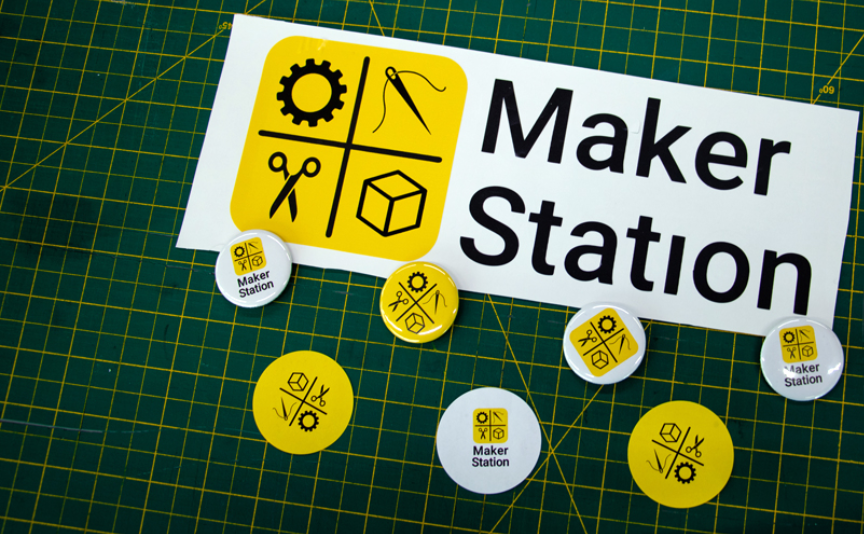
How It Works
- Prepare your ideas and design files before you visit. Review the design specifications for the equipment on our website and prepare your design file before you come to the branch.
- Starting July 24, drop in any time during open hours at our Alton Branch. The equipment is available on a first-come, first-served basis—no appointment necessary.
- Visit staff at the service desk to get started. You’ll need to sign a waiver, purchase any necessary materials, and receive instructional materials to review.
- Start creating! Print, sew, cut and create using one of the four pieces of equipment in the MakerStation.
The equipment is free to use, but you will need to purchase materials such as filament for the 3D printer, vinyl for the Cricut, and button materials for the button maker. We only charge for materials at cost. For the sewing machine, makers will need to bring their own suitable fabric.
You’re Invited to the Showcase
Want to see it in action? Join us for the MakerStation Showcase on Wednesday, July 23, from 6 to 8pm.
Check out live demos, explore the new equipment, get inspired by creative projects, and take home a small maker project
Whether you’re into crafting, designing, or just trying something new, MakerStation at Alton Branch is the place to make it happen!

 By Staff By Staff
June 18th, 2025
BURLINGTON, ON
Restoration work surpasses goal, reaching nearly 16 hectares—the equivalent of 30 football fields
A question that is asked of us frequently is who owns the 407 ETR?
407 International Inc. is the sole shareholder of 407 ETR and is owned by:
Cintra Global S.E. which is a wholly owned subsidiary of Ferrovial S.A. (48.29%);
Canada Pension Plan Investment Board (CPP Investments) and other institutional investors (44.20%); and
Public Sector Pension Investment Board (PSP Investments) (7.51%)
– In recognition of Pollinator Week, 407 ETR has announced that its pollinator conservation efforts with the Canadian Wildlife Federation (CWF) have surpassed the12-hectare goal of roadside restoration.
The initiative is on track to restore 15.8 hectares of habitat restoration—the equivalent of approximately 30 football fields. Today, there are 15 projects underway within local municipalities and conservation areas in the Greater Toronto Area (GTA). The restoration work includes Kingsford Gardens in Oakville; boulevard restorations in Toronto; roadside restorations in Halton Hills; and a roadside meadow plot in Keswick.
 Photographs that tell part of the 407 ETR story on roadside vegetation management to support the recovery of monarchs, bees, hummingbirds and other pollinator species. In 2023, the Company signed onto a three-year, $500,000 sponsorship with CWF to support its Rights-of-Way as Habitat Program. In addition to supporting the planting of native wildflowers and grasses, 407 ETR’s funding is helping CWF educate rights-of-way managers about best practices in roadside vegetation management to support the recovery of monarchs, bees, hummingbirds and other pollinator species.
“Our collaboration with 407 ETR enables restoration of native meadow habitat along rights-of-way in the GTA,” says Carolyn Callaghan, Senior Conservation Biologist, Terrestrial Wildlife at CWF. “By establishing thriving meadow ecosystems, we’re helping native pollinator species, like the monarch butterfly, flourish while also enhancing the natural pollination of flowering plants and increasing biodiversity on the landscape.”
The Pollinator Pathway expansion by Oakville Green Conservation Association, located by a roadside at Kingsford Gardens, in the path of monarch migration, is flourishing thanks to the collaboration. With additional native plants added in 2024, the site became more welcoming to pollinators and monarch butterflies were spotted in the fall of 2024.
The next few years will be critical for other meadow projects that are in their “creep phase” as the native seeds develop roots to grow into successful plant communities, supporting the monarch butterfly and other pollinators around the GTA.
 Access points to the 407 ETR “As stewards of a vital transportation corridor in the GTA, we recognize our responsibility to protect and enhance the biodiversity along our rights-of-way,” says Javier Tamargo, President & CEO, 407 ETR. “At 407 ETR, we want to be part of the solution by supporting land restoration efforts in the communities we serve, and it’s great to see these spaces turning into thriving ecosystems, contributing to a healthier environment for generations to come.”
There are over 200,000 kilometres of roadways in Ontario, representing tens of thousands of hectares of vegetated land.
Insect abundance has declined by 50 to 90% in North America and Europe.
Eight species of native bees are considered at risk in Canada and the population of the monarch butterfly has declined by 75% in North America.
GTA residents can support pollinators with native species for their gardens. Native plants have co-evolved with the wildlife of that area and are often their perfect food. They require less maintenance, are less susceptible to disease and pests, and many produce colourful blooms. Learn more at 407etr.com/biodiversity.
Since 2023, the Company has planted 30,000 native trees along Highway 407 ETR.
The Company is supporting Nature Conservancy of Canada’s Conservation Intern program with a three-year, $800,000 sponsorship. The program helps prepare the next generation of environmental leaders with real-world, skills-building opportunities to care for natural areas in Ontario.
Highway 407 ETR highway spans 108 kilometres from Burlington in the west to Pickering in the east.

 By Staff By Staff
June 16th, 2025
BURLINGTON, ON
Students from the Halton District School Board (HDSB) achieved outstanding success at the 2025 Canada-Wide Science Fair (CWSF), held from June 1–6 in Fredericton, New Brunswick. The CWSF is Canada’s largest annual youth science, technology, engineering and mathematics (STEM) event. For more than 60 years, the CWSF has united young thinkers from across Canada to present their research and innovations, compete for prestigious awards and engage with like-minded peers who are passionate about discovery and innovation.

This year, 11 students from HDSB elementary and secondary schools earned 40 awards across a range of categories, recognizing excellence in innovation and research. The following are the Burlington students.
Evan Budz, Grade 9 student at Dr. Frank J. Hayden Secondary School for Development of an Autonomous Bionic Sea Turtle Robot for Ecological Monitoring using AI
- Best Project Award – Innovation
- The Beaty Centre for Species Discovery Award
- Excellence Award – Gold
- Challenge Award – Environment and Climate Change
- Youth Can Innovate Award
- European Union Contest for Young Scientists
- Mount Allison University Entrance Scholarship
- Western University Entrance Scholarship
Anish Rathod, Grade 12 student at Burlington Central High School for PIONEER: Pipe Inspection and Observation for Non-Destructive Evaluation and Environmental Review
- Engineering Innovation Award
- Excellence Award – Silver
- Dalhousie University Faculty of Science Entrance Scholarship
- Mount Allison University Entrance Scholarship
- University of New Brunswick Canada-Wide Science Fair Scholarship
- University of Ottawa Entrance Scholarship
- Western University Entrance Scholarship
Claire Marsh, Grade 11 student at M.M. Robinson High School for Autism Identification Tool: An AI Approach to Reducing Diagnostic Barriers
- Excellence Award – Bronze
- Mount Allison University Entrance Scholarship
- University of Ottawa Entrance Scholarship
- Western University Entrance Scholarship
The impressive results at the Canada-Wide Science Fair reflect the strength of science, technology, engineering and mathematics (STEM) learning across the HDSB. With students from a variety of schools represented, these achievements highlight how the HDSB fosters curiosity, encourages innovation and provides meaningful opportunities that help students develop their passions and deepen their learning.

 By Staff By Staff
June 9th, 2025
BURLINGTON, ON
Books are your passport to adventure, so get ready to read across the globe this summer by joining Burlington Public Library’s Summer Reading Club (SRC). This exciting reading club is for ages from birth to 17. Read what you want – when you want – how you want. It’s free, it’s fun, and it’s easy. Registration is now open, and everyone is welcome to join.
 Young people don’t have to look very far for a summer reading program. From June 28 to August 24, young readers can set their own weekly reading goal and strive to achieve it. This year, journey around the world one amazing book at a time—and discover new adventures along the way!
“When kids keep reading during the summer, they hold on to the skills they’ve worked so hard to build over the school year,” says Lita Barrie, BPL Chief Executive Officer. “A simple reading goal can make all the difference—helping kids stay sharp, feel confident, and head back to school ready to learn.”
Rewards & Prizes Galore
Although reading a good book is its own reward, participants can visit their nearby branch every week with their Summer Reading Club tracker and check in with Library staff. Share what you’ve read to receive a weekly giveaway prize and a ballot for a chance to win a BPL Prize Pack during three draws throughout the summer. The first prize draw takes place early, so be sure to register for SRC by June 29.
Stay Engaged with Weekly Staff Picks
To keep the momentum going over the 12-week program, we’ll send out freshly curated Staff Picks booklists to participants every week, along with a friendly reminder to check in. These selections are sure to keep young readers and parents engaged and motivated.
“Summer Reading Club is an excellent way to reinforce a positive reading habit while also making the most of all the free programs for kids throughout the summer,” Barrie adds.
There’s always something happening at the library. Find out what’s on this summer at bpl.on.ca/programs and follow us on social media @BurlONLibrary.

 By Pepper Parr By Pepper Parr
June 9th, 2025
BURLINGTON, ON
Emma Sankey, Executive Director Art Gallery of Burlington along with Susan Busby, the past chair of the AGB board. appeared before Council this morning. The current chair was on vacation.
They were there to speak to the final facility master plan and future needs feasibility study authored by Lord Cultural Resources and Brooke McElroy, architects. They were not able to take part in the Council presentation due to prior commitments. Their work was described as being instrumental to the shaping of the path forward.
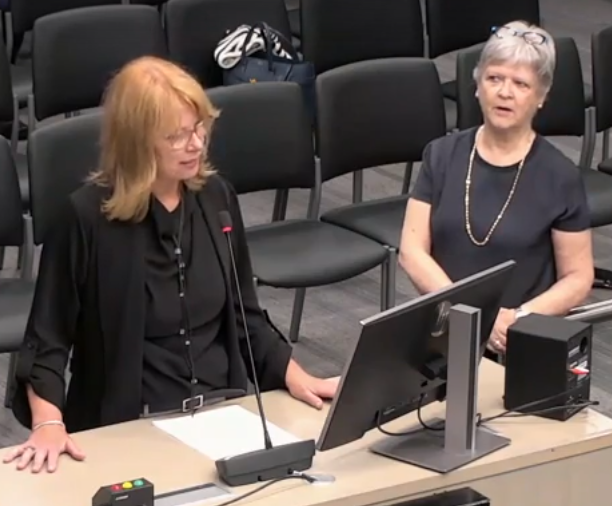 Susan Busby didn’t seem impressed with what Emma Sankey was saying. At this point my ears twitched.
The AGB is asking the city to spend $116 million on what will basically be a new Art Gallery and the Chair of the AGB was not able to arrange her vacation time around the Council meeting schedule.
And the people who designed the master plan had a “prior commitment”.
 Council members were listening – but they didn’t have any questions during the delegation. These Council meetings are put together weeks before they take place.
Something of this size calls for a thorough presentation during which all the stakeholders get to voice their views.
There was nothing from the Guilds, nothing from the people who put on the numerous programs at the AGB.
Why weren’t these people at the podium, especially when Emma said on several occasions that “these plans are foundational to our future vision, supporting Community Access, cultural vibrancy and long-term sustainability.”
The tone throughout was set by Sankey who put it this way:
“We’ll just go quickly. So next slide please. We’re proposing a three-story building. It would be the basement, ground floor, second floor, third floor, the ground floor would be very free, open access. It would have the gift shop, it would have a cafe, and it would have the studios that would be animating the act of making. Would also have space for free family programming. Next slide, please. The second floor, we would become a mission-based gallery. At this point, the second floor would have all of the gallery spaces. So we currently have two and a half, let’s say so we’re going to about five different gallery spaces in this layout with the education center and expansion of the studios. Next slide, please. The third floor would become our events venue rental space, allowing us to maximize revenue with venue rentals in a beautiful space with sweeping views of Lake Ontario and outdoor terraces. Next slide, please. The basement would now host the collection, and there would also be some underground parking. Next slide, please.
This took all of three minutes.
What was the rush – Council had already given the delegation more time if they needed it.
Councillor Kearns asked Susan Busby, through the chair, to talk to us a little bit about how the voices in our community helped to shape this plan, and what engagement activities did you undertake?
 At the end of the delegation, one wondered why there were no Guild members on hand to support the proposal. Where was the architect? Susan Busby: “We had multiple layers of consultation. At first, we started heavily internally with staff. Then we went out and we were working with city staff. I mean, this is city land and the city building, so the consultants interviewed extensively within the staff team.
“We also went out to other cultural partners, like the Joseph Brant Museum, Burlington Performing Arts Center, the libraries, Burlington Downtown, BIA; into the different school systems as well.
“We talked to Sheridan College, Mohawk, Brock University, really trying to be as diverse as possible. We had meetings with the Guild members that utilize the space as well as other AGB members. I would say fairly extensively. And then we also held an indigenous sharing circle. We brought together a significant number of indigenous community members to really speak to the vision of what the gallery would be.
“I have presented the findings to every member of council independently, along with the mayor. I’ve also presented with Executive Director of Economic Development Burlington Tourism. So yes, extensive, constant consultation.
We recall no mention whatsoever about a new building at the 50th Anniversary fundraising event. We do recall the Ontario Arts Council mentioning that they have been financial supporters from the day the Gallery opened.
 Suzanne Carte During an extensive interview with Suzanne Carte, which is yet to be published, she made no mention of a new structure.

 By Staff By Staff
June 3rd, 2025
BURLINGTON, ON
What a decent way to thank a teacher!
In the past, well at least my past, you gave the teacher yet another coffee mug, maybe one you decorated yourself.
The Halton Learning Foundation (HLF) invites community members to thank the teachers who’ve quietly made a difference, in a meaningful way, by helping an HDSB student in need in their honour.
Teachers do more than teach.
They notice when a child doesn’t have lunch and quietly tuck snacks into their desks.
They find warm jackets for cold days and make sure every child can join the field trip, no matter what their circumstances.
They’ve wiped away tears when no one else was there.
They bring extra supplies for students who can’t afford them.
They ensure every child feels seen, safe, and supported.

HLF works closely with teachers and school staff across the Halton District School Board (HDSB) who are often the first to recognise when a student is struggling due to financial barriers. Through emergency support, HLF helps provide food, clothing, school supplies, and other essentials — all made possible thanks to donors and compassionate educators.
The “Thank a Teacher” campaign allows parents, students, alumni, and community members to make a donation to HLF in honour of a teacher or school staff member who has made a difference. When a gift is made, HLF sends a personalised card to that educator to let them know someone recognized their compassion and paid it forward.
It’s also a meaningful way to thank an educator who is retiring this year, in recognition of their years of dedication to students.
 Teachers are always there, ready to talk something through with students. “This is about more than appreciation, it’s a way to honour teachers by continuing their legacy of kindness”, says Marc Clare, HLF CEO. “I’ve seen the quiet acts of care teachers show every day — and this is a way to honour that compassion by continuing it. When you help a student in need in a teacher’s name, you’re carrying their legacy forward in the most meaningful way.”
Whether you’re a parent looking for a meaningful end-of-year gift, or a former student remembering the teacher who believed in you, this is your opportunity to say thank you in a way that truly reflects who teachers are: caring champions of students.
“As a vocal coach and a parent, I’ve witnessed just how much heart teachers pour into their students, going the extra mile to make extracurriculars like musicals, plays, and sports possible,” says Dania Thurman, School Council Chair at Burlington Central High School. “Their dedication, both in and out of the classroom, fosters confidence, joy, and lifelong memories. They truly deserve to be celebrated and thanked.”
Your donation will provide critical support to students facing financial hardship, in the spirit of the teachers who show up for them every day.
To learn more or donate in honour of a teacher, a school staff, or a retiree, visit thankmyteacher.ca
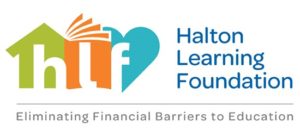 The Halton Learning Foundation helps support quality education for Halton District School Board students by providing emergency help for students in need, post-secondary scholarships, and funds to assist schools that have classroom needs beyond core education funding. The Halton Learning Foundation helps support quality education for Halton District School Board students by providing emergency help for students in need, post-secondary scholarships, and funds to assist schools that have classroom needs beyond core education funding.

 By Pepper Parr By Pepper Parr
June 3rd, 2025
BURLINGTON, ON
There was what I thought a really good interview between Denzel Washington and Stephen Colbert on Facebook.
Described as “The Late Show with Stephen Colbert” led to a heated on-air confrontation, resulting in the actor’s abrupt departure from the show.
The incident was sparked by Colbert’s probing questions, leading to a tense exchange between the two. The event was widely discussed on social media and in news outlets, with many supporting Washington’s stance and questioning Colbert’s interview style.
 The interview that never happened. Guess what – there was never an interview. What viewers were looking at was something someone made up and posted to Facebook.
Facebook presentations now have advertisements sprinkled throughout.
Each time the interview is watched, the creator of the phony interview earns some income. It at times runs into the tens of thousands. Facebook gets fatter, the creator get richer and you get misled.
These “creators” earn a very decent income from these phony interviews.
Disinformation at its best.
When this sort of thing creeps into the political world or focuses on the celebrities, it makes for good gossip and good incomes.
But it is a serious disservice to the media and an informed public.

 By Staff By Staff
June 2nd, 2025
BURLINGTON, ON
We apologize for the error in the photograph of Dr. Lennox that first appeared in this article.
New Democrats will announce a motion this week addressing social media harms to youth.
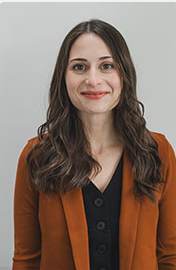 NDP member and Shadow Minister for Mental Health and Addictions – Dr. Robin Lennox MPP Catherine Fife, joined by Deputy House Leader and Shadow Minister for Education, Chandra Pasma; and Shadow Minister for Mental Health and Addictions with responsibility for Primary Care, Robin Lennox; will introduce her motion calling for action on the harmful impacts of social media on children and youth in Ontario.
The motion urges the government to study the addictive design of platforms, clarify the responsibilities of tech companies, and implement health warnings through Ontario’s public health units.
Everyone is taking a whack at social media – especially the politicians, who use it more than any other sector of society.
 Brock University recently published a paper on just how serious the problem is. Brock University recently published a paper on just how serious the problem is.
“Information is rooted in the political agenda of the media outlet or person putting it online, and we need to confirm facts via other sources, such as print media, parents and teachers, and alternative websites,”
We have attached a link to the article: Spotting fakes and facts: Brock experts on why digital literacy is critical for children

 By Staff By Staff
May 26, 2025
BURLINGTON, ON
Volunteers will be required to attend a 1-hour virtual training session on May 29 @ 6:30PM
Register here: Marsh Volunteer Planting 2025
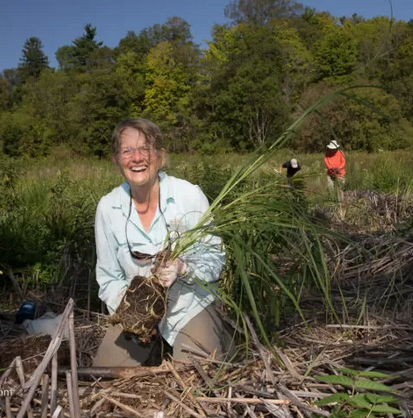 The first planting event is scheduled for May 31. BARC is excited to launch our 2025 Marsh Volunteer Planting (MVP!) group for another fun summer of nature restoration!
Since the 1990s, volunteers have played an essential role in helping Bay Area Restoration Council (BARC) and Royal Botanical Gardens (RBG) plant native wetland species in Cootes Paradise and Grindstone Marshes to provide food and shelter for wildlife and improve water quality by stabilizing soil and reducing erosion.
We are excited to launch the 2025 Marsh Volunteer Planting group for another fun summer of nature restoration! Be aware that planting can get very muddy – it is messy but rewarding work! BARC provides rubber boots, hip waders, or chest waders depending on site requirements.
What is the time commitment for joining Marsh Volunteer Planting?
Volunteers will be required to attend a 1-hour virtual training session on May 29 from 6:30-7:30pm.
Three to four planting events will run throughout the summer, and we ask that you commit to attending at least one 2.5 hour planting event. There will be a mix of daytime, evening and weekend events.
The first planting event is scheduled for May 31.
How strenuous are Marsh Volunteer Planting events?
Marsh Volunteer Planting events require moderate to high activity levels. Planting sites are located in a wetland environment and the terrain can be rugged and difficult to navigate. Please consider your own physical fitness level and medical history to decide if this activity is right for you. If you have any questions about accessibility, please contact BARC staff and we will do our best to accommodate you.
How old do you need to be to attend an event? Due to the nature and location of the planting sites, these events are not suitable for children. You must be at least 16 years old to participate. An adult guardian must sign a waiver for anyone under 18.
Why volunteer as a Marsh Volunteer Planter? The Hands-on experience in planting native marsh vegetation is a chance to visit and learn about unique marsh ecosystems with BARC and RBG staff
The opportunity to connect with like-minded individuals who care about the environment
Refreshments and all necessary equipment provided by BARC
Sign-off for volunteer hours if requested.
A Certificate of Completion is available to volunteers who complete the orientation session and attend a minimum of 2 marsh planting events in one summer.
Interested in joining this cohort of MVPs? Please complete the registration form: Marsh Volunteer Planting 2025
Questions? Please email kaeley@bayarearestoration.ca

 By Staff By Staff
May 25th, 2025
BURLINGTON, ON
This is an early notice. A Drawn from Clay: A Ceramic Collage Workshop is being offered Saturday, June 21, 1–4 pm at the Lee-Chin Family Gallery
$50 | $45 FOR MEMBERS
 Breanna Shanahan. Here is how the Gallery describes the event.
Let the AGB’s collection inspire you in this hands-on drawing and collage workshop in the Lee-Chin Family Gallery.
Participants are invited to draw in response to the many unique ceramics on view in A Curve, Not a Line, then learn how to cut and combine their drawings to tell new stories through collage under the guidance of artist and educator Breanna Shanahan.
Register today–spaces are limited. Register HERE

 By Staff By Staff
May 23rd, 2025
BURLINGTON, ON
The Burlington Chamber of Commerce has named Sarah Stone as the Finalist for Young Entrepreneur of the Year
In their announcement the Chamber said: “What makes this achievement especially meaningful is Sarah’s journey, both professional and personal. She launched Stone Graphic & Web Design at just 19 years old while still in her first year of the Interaction Design program at Sheridan College. Now, at 23, she leads a thriving studio that provides branding, digital marketing, and web services to clients across industries.
“This well-deserved recognition honours her remarkable leadership, innovative thinking, and dedication to supporting businesses through design and marketing.
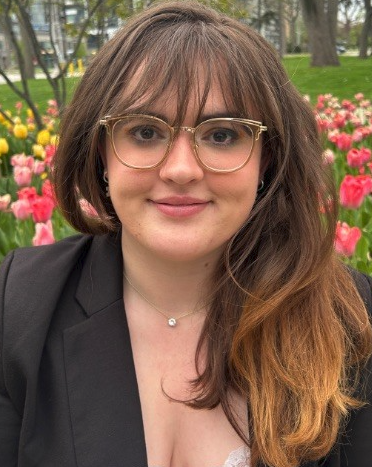 Sarah Stone: “Alongside my work with clients, I also run an internship program twice a year.” Sarah founded her business not from a place of convenience, but out of a deep desire to help businesses communicate more effectively and reach their full potential. What started as a solo venture has grown into a trusted agency working with clients in retail, HR, fashion, security, education, wellness, and more. These industries all have very different needs, but they share one important requirement: strong, strategic marketing support.
Sarah’s entrepreneurial path has been anything but ordinary. At just 12 years old, she was diagnosed with Cyclic Vomiting Syndrome (CVS), migraines, and seizures, a trio of chronic conditions that could have limited her potential. Instead, they became part of her story of resilience. Rather than letting those diagnoses define her, Sarah used her challenges to fuel her motivation and carve a path that few would dare to take.
Stone said “This recognition means a lot to me, not just professionally, but personally. I’ve lived with chronic health conditions since the age of 12, and building this business has been both challenging and incredibly rewarding.
“Alongside my work with clients, I also run an internship program twice a year to help students gain hands-on experience in marketing, sales, and entrepreneurship, something I’m deeply passionate about.”
Sarah credits much of her foundational growth to her time at Sheridan College, where she studied Interaction Design. There, she honed her skills in user-centred design, visual communication, and creative problem-solving, skills that would become the cornerstone of her business.
“Sheridan taught me how to take an idea and turn it into something real. More importantly, it showed me how to solve problems for people through design, and that’s what great marketing really is.”
The Sarah Stone story shows no signs of slowing down. Her story is a testament to what’s possible when creativity, courage, and resilience come together, and it’s clear that the best is yet to come.

 By Staff By Staff
May 23rd, 2025
BURLINGTON, ON
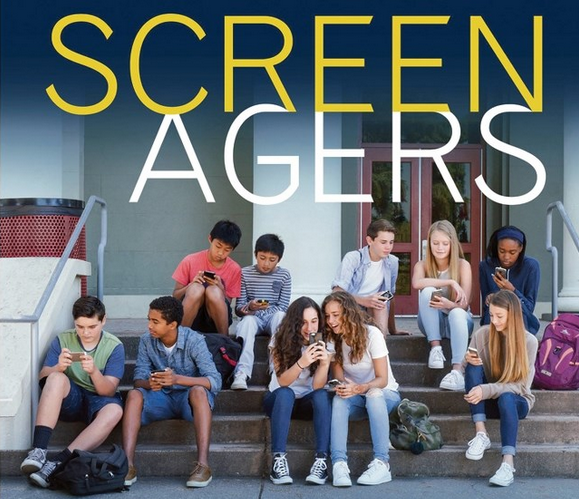 This generation has spent their entire lives surrounded by screens. Generations Z and Alpha may have spent their entire lives surrounded by screens — and the deluge of content constantly streaming from them — but Brock University experts say it’s important not to confuse digital comfort with digital literacy.
“There is an assumption that this is just the world they live in as they have always had access to these technologies, but digital natives may, more than ever and more than anyone, need some kind of pause,” says Associate Professor of Communication, Popular Culture and Film Studies Jennifer Ellen (Jenellen) Good.
“When we sit down in front of a screen, we do it because we enjoy what’s happening,” she says. “Understanding screens doesn’t then mean that those screens don’t have influence over us.”
And that influence continues to evolve alongside technology.
Parents and educators now need to consider not only how children are interacting with the internet, but also with artificial intelligence (AI).
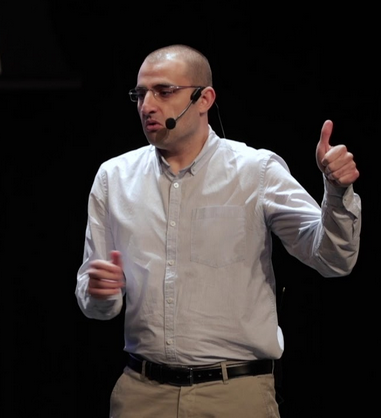 Mohammed Estaiteyeh says students can begin learning basic concepts of AI literacy as early as Grade 4, Assistant Professor of Digital Pedagogies and Technology Literacies Mohammed Estaiteyeh says students can begin learning basic concepts of AI literacy as early as Grade 4, with key strategies involving teaching verification skills such as fact-checking and reverse image search, promoting transparency in AI outputs and encouraging skepticism toward content.
“At this stage, they are already interacting with AI in everyday tools such as voice assistants, video recommendations and personalized learning platforms, even if they don’t realize it,” he says. “Introducing age-appropriate concepts early on helps lay the foundation of AI for deeper understanding later.”
More complex topics — like data bias, ethical concerns (such as the exploitation of cheap labour in poor countries for data mining), and the applications of AI in other fields like medicine and robotics — could be discussed with older children.
“Students must also reflect on issues of privacy, evaluating how their own data might be collected and used, and responsible use of AI in their own learning,” Estaiteyeh says.
“Early exposure would specifically benefit students from marginalized communities who are typically left behind,” he adds. “AI literacy is not just about understanding technology; it is about equipping students to navigate, question and shape the digital world they’re growing up in.”
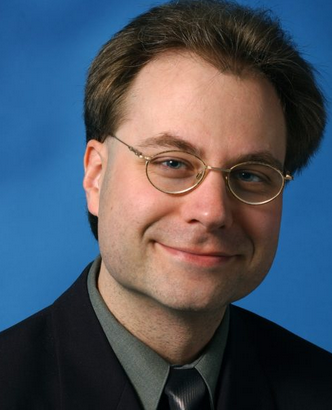 David Hutchison is a cross-appointed Professor in the Department of Teacher Education and the Department of Digital Humanities, where he serves as Director. That begins with children and teens going beyond simply being comfortable using digital tools and social media and learning to use them in a “critical or reflective way,” says David Hutchison, a Professor in the Departments of Educational Studies and Digital Humanities.
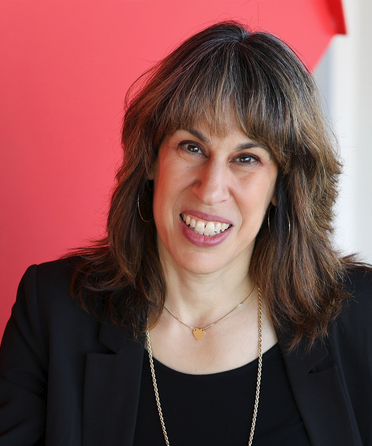 Child and Youth Studies professor Shauna Pomerantz says there is “always more to the story. With so much information — and misinformation — readily available to youth through platforms such as TikTok, discussions on navigating what children are viewing need to begin “right away,” says Professor of Child and Youth Studies Shauna Pomerantz.
“Pretending like socials don’t exist and hoping your child won’t be exposed to potentially difficult information online is unrealistic; burying our heads in the sand is not an option,” she says. “We need open and honest communications with kids about the joys and challenges of social media existence.”
Most young people understand the role of algorithms fairly well, Pomerantz says. However, it’s important to remind them their feeds “exist in an echo chamber, where their recorded ‘likes’ are reflected back to them through an algorithm that knows what each viewer wants to see, reinforcing the young person’s pre-existing perspectives.”
There’s “always more to the story,” she adds.
“Information is rooted in the political agenda of the media outlet or person putting it online, and we need to confirm facts via other sources, such as print media, parents and teachers, and alternative websites,” Pomerantz says. “We should also be talking to all genders about how social media amplifies hate and makes extremist views appear normal and necessary — this is perfect dinner conversation.”
Hutchison says students also need to be taught the fundamentals of navigating an online existence with the caveat that the guidelines for discerning fact from fiction are constantly shifting.
“In a sense, we’re in a post-truth world where a reliance on traditional forms of what is considered to be valid data or knowledge are actually under attack,” he says. “There are also people intentionally putting out content that is meant to mislead — unapologetically so. And there is also the issue of AI-generated information.”
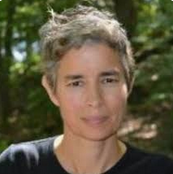 Jennifer Ellen (Jenellen) Good Equally important to teaching children how to critically engage with the online world, including the moral and environmental ramifications of their digital footprint, is spending time away from the never-ending scroll, Good says.
“All of this content is being created without context and it’s important for young people to not only be without their phones, but to also be without their phones running around, playing and interacting in the world, rather than through a screen,” she says.

 By Staff By Staff
May 21st, 2025
BURLINGTON, ON’
An error in the date in the original story has been corrected. The mistake wasn’t ours.
Families, students, staff and community members are invited to attend an upcoming session as part of the Director’s Panel Series.
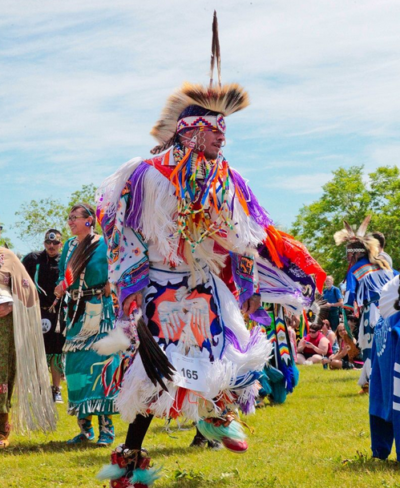 The Indigenous community in Canada is much much more than a culture with colourful dances – it is a deep part of what Canada is today. Each session in this series explores issues and themes impacting students and education today. Sessions are led by Director of Education Curtis Ennis and Human Rights & Equity Advisor Pardeep Nagra.
Panelists featured in the Director’s Panel series may also include HDSB students, parents/guardians and subject-matter experts.
The upcoming session in the series will be:
Indigenous Rights and Education: A Shared Responsibility Monday, May 21 from 6 – 7 p.m.
This will be a virtual event with the livestream linked on the HDSB website (hdsb.ca).
Registration is not required.
Indigenous Rights and Education: A Shared Responsibility will explore the ways in which the HDSB promotes Indigenous Rights through education for students and staff that advances knowledge of true history, responsibilities and reconciliation, while amplifying Indigenous voices and addressing systemic barriers to support the achievement of Indigenous students. Panelists will discuss the shared responsibility and commitment to Indigenous Rights as outlined in the HDSB’s 2024-2028 Multi-Year Strategic Plan. Joining the session as panelists will be members of the HDSB’s Indigenous Rights and Education Department.
Those interested in attending the event are invited to submit a question to the panel before the session through this Google Form.
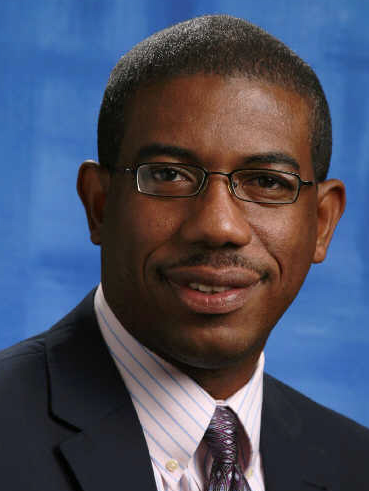 Curtis Ennis, Director of Education for the Halton District School Board. “When it comes to reconciliation, we all have a shared responsibility to continue listening, learning and reflecting on the truths and voices of Indigenous communities,” says Curtis Ennis, Director of Education for the Halton District School Board. “This session provides an important opportunity for our students, staff, families and community members to deepen our understanding of the true history and current realities of Indigenous Peoples. It also serves as a platform to amplify Indigenous voices, engage in meaningful dialogue and commit to actions that uphold Indigenous Rights and advance reconciliation through education.”

 By Staff By Staff
May 19th, 2025
BURLINGTON, ON
The City of Burlington, the Region of Halton Public Health Department and the University of Waterloo – Faculty of Recreation and Leisure Studies have been selected as one of four Canadian municipalities to join the conversation about healthy cities in Helsinki, Finland.
This opportunity is part of the Healthy Cities Research Initiative and has been made possible thanks to support from 8-80 Cities and funding from the Canadian Institutes for Health Research (CIHR).
 Helsinki Workshop Helsinki Workshop
The grant to the participants includes all costs for a small group to travel to and stay in Helsinki, Finland from May 16-24, 2025. The group will participate in a workshop to learn about Helsinki’s smart growth strategies, including mixed-use developments and efficient public transportation, healthy urban policy, protecting green spaces, and sustainable growth.
The group includes Mayor Meed Ward, two staff members from the City of Burlington, one staff from Region of Halton Public Health and one faculty member from the University of Waterloo.
Helsinki is considered a global leader in complete communities. The workshop provides an opportunity for staff to see new perspectives and potentially broaden their approach to better serve our community through new ideas, strategies and proven concepts.
Burlington Workshops
The city will benefit from the Helsinki learning through two future workshops to inspire new ideas and foster collaboration to implement healthy urban policy in Burlington by adapting Helsinki’s strategies for improving/managing infrastructure, promoting health, and improving Burlington residents’ quality of life.
One workshop will be held with community partners and elected officials and the other will be held with residents. Dates and times of the workshops will be shared once details are finalized.
The end goal is to move towards the creation of more complete communities that meet people’s needs for daily living throughout an entire lifetime by providing convenient access to an appropriate mix of jobs, local services, a full range of housing, transportation options, inclusive spaces and public service facilities including affordable housing, schools, recreation and open space for their residents.
The CIHR stresses citizen engagement with this comment:
Citizen engagement is the meaningful involvement of individual citizens in policy or program development. To put it simply, citizens are “engaged” when they play an active role in defining issues, considering solutions, and identifying resources or priorities for action. This “meaningful involvement” can take place at a variety of stages in the research, planning, or implementation phases of a project.
The sustainable culture that has worked so well for the Scandinavian countries has yet to work itself into the way we do things in North America.
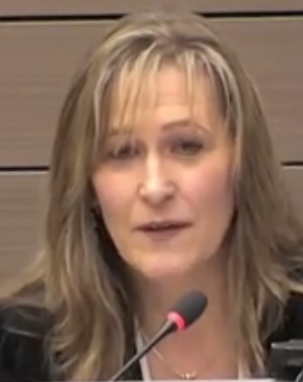 Mayor Marianne Meed Ward is on the road again. This time it is to Finland for a series of workshops that Burlington doesn’t have to pay for. Mayor Meed Ward did say: “Helsinki is a leading example of a healthy, walkable, green city that provides inclusive housing and social services to all community members. With similar challenges and goals in Burlington, we can learn from their example. Along with other city participants in this conference, generously paid for by the Canadian Institutes for Health Research through the Healthy Cities Research Initiative, I look forward to learning and bringing home invaluable insights and ideas to support our community’s growth and well-being.”
The intentions are there.

 By Staff By Staff
May 16th, 2025
BURLINGTON, ON
ATTENTION Parents! Guardians! Grandparents! Caregivers! Aunts! Uncles! Elders! Teachers! Principals! Students! Mentors! Youth Workers! Educational Support Staff! School Trustees! Lifelong Learners and Allies in Education!
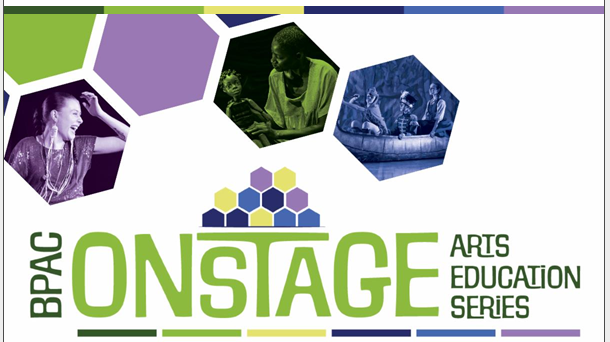
The Burlington Performing Arts Centre has announced its BPAC ONSTAGE offering, their new season of exceptional performances for students from Kindergarten to Grade 12.
Their team has selected 16 performances and workshops designed to inspire a lifelong appreciation for the performing arts while bringing the Ontario Arts Curriculum to life.
You are invited to share news of our 25/26 BPAC ONSTAGE Season with the educators and learners in your life!
For only $10 per student ticket, the 25/26 BPAC ONSTAGE Education Series is exclusive to schools and offers students a window into the dynamic world of dance, theatre and music.
 An in-depth backstage tour and hands-on demonstration led by BPAC’s talented technical team New for the 25/26 Season, BPAC Backstage is an in-depth backstage tour and hands-on demonstration led by BPAC’s talented technical team, designed for high school-aged students considering a career in the technical performing arts!
 Golden Ticket Program provides FREE tickets to performances from our Education Series BPAC’s Golden Ticket Program provides FREE tickets to performances from the Education Series to students who would otherwise not be able to access these events. This program would not be possible without the generous support and donations from our community members like you!
Help us continue to enrich the lives of Burlington youth by donating to our Golden Ticket Program. You will receive a full tax receipt for donations of $25 or more.
For more information and how to donate, please visit: burlingtonpac.ca/golden-ticket

 By Staff By Staff
May 16th, 2025
BURLINGTON, ON
The Halton District School Board (HDSB) and Halton Region Public Health will host information sessions to raise awareness about the impact of vaping on youth and how parents/guardians can support their children.
 An unfortunate pathway to nicotine addiction and other negative health effects. Vaping is a fast-evolving trend that has attracted youth and created an unfortunate pathway to nicotine addiction and other negative health effects. These information sessions will discuss what vaping is, the health risks to youth, youth experience and how parents/guardians can support their children.
The sessions, hosted by Public Health Nurses from Halton Region Public Health and school principals/vice-principals, will be held at four secondary schools across Halton. Public Health Nurses work to enhance the health of school communities by working collaboratively on policies, programs and building environments that prevent substance use/misuse and promote mental health.
At the information sessions, parents/guardians will gain a better understanding of vaping, including how to spot the risks, recognize the signs, talk to children about vaping and discover tools, strategies and resources to support their child.
Milton: Craig Kielburger Secondary School – Tuesday, May 27
Halton Hills: Georgetown District High School – Thursday, May 29
Oakville: Garth Webb Secondary School – Monday, June 2
Burlington: Nelson High School – Tuesday, June 3
 Those interested in attending are asked to register online by Thursday, May 22. Doors will open at 6:15 p.m. and the sessions will be held from 6:30 – 7:30 p.m. For those unable to attend in-person, there will be a virtual session held on Thursday, May 22 from 6:30 – 7:30 p.m. Learn more on the Vaping webpage on the HDSB website. Those interested in attending are asked to register online by Thursday, May 22. Doors will open at 6:15 p.m. and the sessions will be held from 6:30 – 7:30 p.m. For those unable to attend in-person, there will be a virtual session held on Thursday, May 22 from 6:30 – 7:30 p.m. Learn more on the Vaping webpage on the HDSB website.
HDSB 2024-2028 Multi-Year Strategic Plan
The 2024-2028 Multi-Year Strategic Plan sets direction and prioritizes the collective actions of all students, staff, families and community members. This plan ensures our efforts as an organization are aligned and coordinated to support more than 67,000 students, 11,000 staff and the broader HDSB community. The six commitments identified in this four-year plan intersect and overlap to ensure that we take a cohesive approach to fulfilling its objectives.

 By Pepper Parr By Pepper Parr
May 14th, 2025
BURLINGTON, ON
Part two of a two-part article on the Burlington Library CEO
“Our demographics.” There isn’t a lot of data, said Lita Barrie.
We don’t do a lot of gender-based analysis when we do our annual customer satisfaction survey. Typically, we weren’t asking people for demographic information, but this past year we did, and it definitely skews to women.
Who uses the library and how many people work there?
Number of staff FTE – 140
Number of books on shelves – BPL’s Collection totals 345,352 items – 305,662 physical items on the shelves
Number of videos on shelves – DVD’s comprise of 11% of BPL annual checkouts.
How many people hold a library card – 93,322 Active Library Card holders (i.e used within the last 2 years)
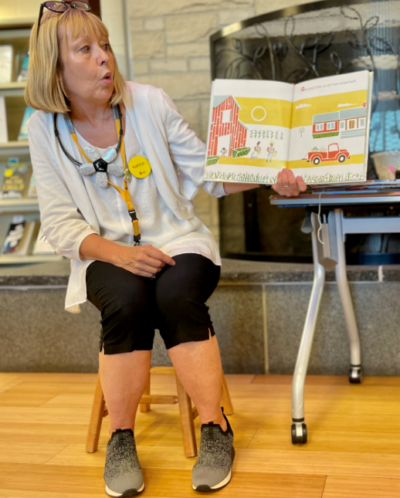 Reading as a concept, whether as a social determinant of health, as a source of learning and growth, or even just for mental well-being is part of what libraries are in place to do. “Just be hazarding a guess to say how many, but it’s interesting, because definitely, for our author events, our book clubs, there tends to be a gender disparity between these and those just borrowing from the library.
“I think we’re seeing, even though we’re in sort of an information age where we’re surrounded with information, there’s more research happening now around attention span, because I think one of the things that people really struggle with is the long form of a book and being able to hold your attention to read for a longer period of time, but reading as a as a concept, whether as a social determinant of health, as a source of learning and growth, or even just for mental well being as a dream stressor. I think that’s the part you know.
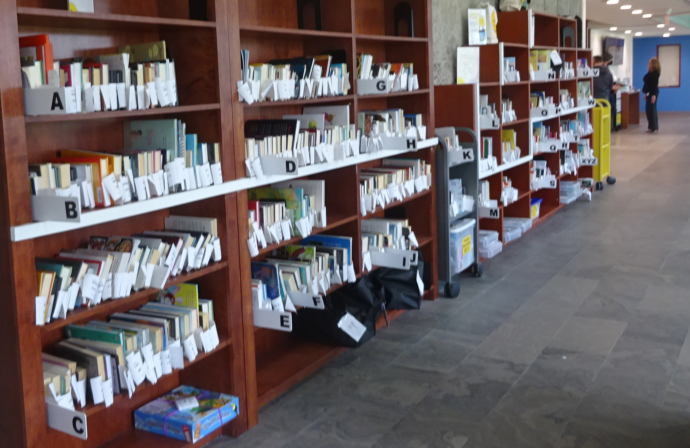 Books that were on hold and are now available are placed here for people to pick up. For those of us who are readers, we know all this. We know all of the things that reading brings us. But for people who haven’t had that; they haven’t discovered that, or they face challenges around that, convincing people of the value can be a bit of a hard sell.”
How do libraries work with educators?. Do they influence each other?
“Definitely, within the library sector, and this could be one of the things that we’ve seen in Canada over the last number of years, is a decline in school libraries. So definitely, kids aren’t having as much of a presence of the library in their elementary and secondary school experience, and that’s particularly true in Ontario.
“We work with educators when we look to find partnerships. “Teachers have big jobs, particularly now with all the things happening in society; the types of partnerships that we used to have is less common now, just because the school boards and teachers just don’t have the time or capacity for those types of collaborative relationships, which I think is a detriment to our ability to really make an impact, but we try to recognize that and find ways that we can engage. I used to have working relationships with educators at the start of my career.
 “The biggest factor in whether a child is a reader is their parent. “The biggest factor in whether a child is a reader is their parent. It’s not just being read to, it’s seeing literature at home, observing a parent. Those are some of the biggest determinants of whether someone is a reader.”
Is there anything that your people can do to work on the disinformation side?
“Very timely question. Definitely, that’s an area of focus we’re looking at. I was part of a podcast we worked on with the Privy Council on misinformation, disinformation, and trying to think about how we as librarians can play a more active role in that.
“We have found that the more confident we feel about our position on something, the more susceptible we are to misinformation.”
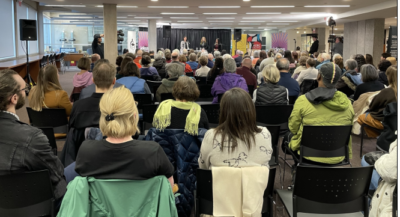 Audience during the recording of the CBC Ideas program at the BPL.  CBC’s radio program Ideas recorded one of their program at the Burlington Central Library; the program was broadcast a couple of weeks later. Lita was not part of the CBC program just to introduce people – she was an active participant along with Ira Wells and Nahlah Ayed (Host, CBC IDEAS). Wells was speaking about an experience he had at his child’s school where they were reviewing the collection. The idea was that there would be nothing in the library that was printed for a certain time period. CBC’s radio program Ideas recorded one of their program at the Burlington Central Library; the program was broadcast a couple of weeks later. Lita was not part of the CBC program just to introduce people – she was an active participant along with Ira Wells and Nahlah Ayed (Host, CBC IDEAS). Wells was speaking about an experience he had at his child’s school where they were reviewing the collection. The idea was that there would be nothing in the library that was printed for a certain time period.
“I share his belief that this is such a loss, because we librarians are on the front lines of providing the public with not just books – but a wide wide range of tools that educate, inform and entertain people.
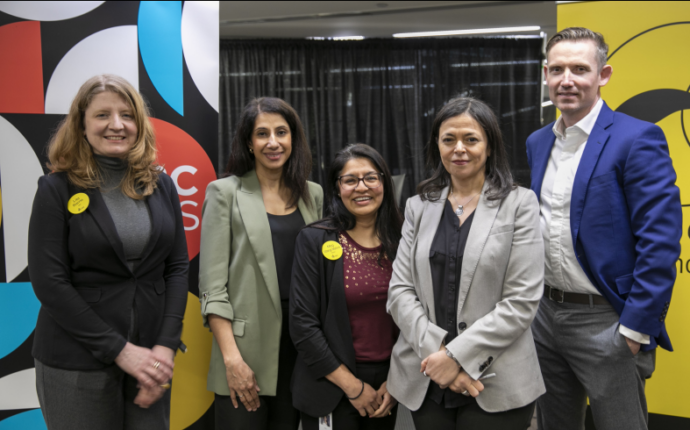 Lita Barrie (CEO, Burlington Public Library), Sabreena Delhon (CEO, The Samara Centre for Democracy), Meg Uttangi Matsos (Director, Service Design & Innovation, BPL), Nahlah Ayed (Host, CBC’s IDEAS), and Ira Wells (Professor, University of Toronto, critic & author). “The books coming in have expanded exponentially.
“The number and volume of reading material that is published on an annual basis, far exceeds our capacity from a budget standpoint, but I think our collection grows more as a partnership, because our team selects based on demand and what people are reading. We also try to balance that with making sure we have breadth and depth and scope, because we don’t want to be so driven by popular demand that you’re not walking into the library discovering something that you never imagined existed. It’s definitely a balance.
“We curate to a certain extent, that’s more of a business driven from our leaders. Our team works with a vendor. People also want the book the moment it’s printed. So we have partnerships with our vendors, we have something called an automatic release plan based on a profile of the type of collection that we have in the library.
“We get our copies of the book on the shelves quickly, that drives the bulk of our collection. Our team refines the selections that adds to the edges of what goes on our shelves; the process helps us build a very complete collection.
Is there anybody on staff able to say to somebody they’re talking to: there’s a book I think you should read?
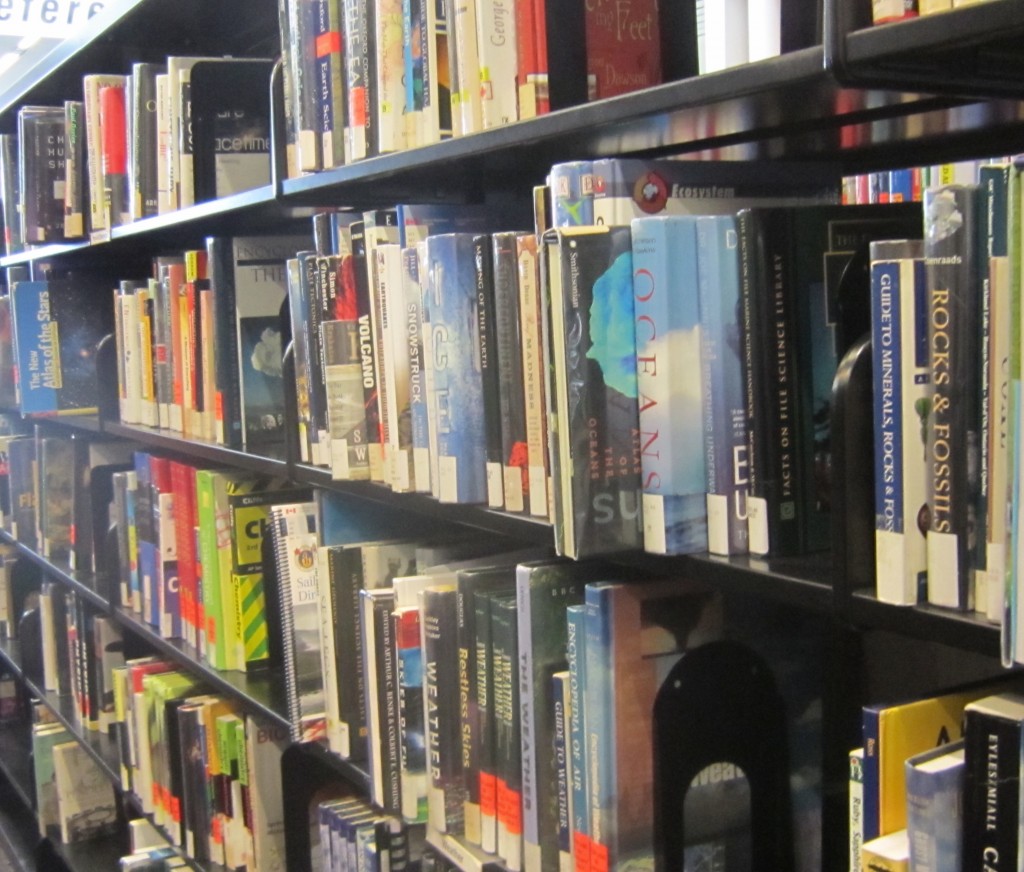 Lita Barrie: ‘It can be a bit of a nerve-wracking figuring out what people might want.’ “I have Pepper. I would hope that the majority of the people on our team would be able to do that, because that was one of the things that we’ve really focused because that can be a bit of a nerve-wracking figuring out what people might want. We’ve developed additional training for our team to ask questions: what does that look like, so that people can understand when they’re talking to someone about what they’ve read they can determine – is it the writing style, is it the content, is it the genre, and then being able to have a conversation with someone else.
“What part of that book did you really like, let them be able to point them in directions, and definitely, technology helps hugely for that, in terms of, you know, the way our catalogue is able to pull like the crazy word that you’ve never heard of.
Does Shakespeare matter we asked. “Yes – Shakespeare – on a daily basis, no, but it’s part of that breadth and that history of English literature that is the core of what it written and what is read.
 “One of the things we’re trying to encourage in people is to nurture themselves and nurture the lives of their children. It’s giving ourselves that space and that time to just let ourselves be immersed in something because there’s such a different experience between that immersion and the flip, flip, flip of the you know, video shots of information that people are getting through social media. “One of the things we’re trying to encourage in people is to nurture themselves and nurture the lives of their children. It’s giving ourselves that space and that time to just let ourselves be immersed in something because there’s such a different experience between that immersion and the flip, flip, flip of the you know, video shots of information that people are getting through social media.
“I think I’m okay with where I’m going and what I’m doing with the library; it’s as much about who you are and the institution you’re in and where you’re going to take that institution at this point. When we celebrated our 150th a few years ago we recognized we are part of a profession that has such a legacy to it; there are people you will never know, who led the waves or created the opportunity for you to be here in that moment and then to hold that responsibility and think, okay, 150 years from now when BPL celebrates its 300th anniversary; what will we have we done in this moment to secure that future and make sure that the institution still has value and meaning.
 New Appleby Library at the Bateman Community Centre will have 10,000 square feet of space. Lita needed me to know that the Appleby Library at the Bateman Community Centre is going to give them an additional 10,000 square feet. “I don’t think most people realize just how big an operation it is going to be. We have dates for when the book shelves and those things will be moving in over the summer. Early fall is the date penciled in at this point.
We’ve spent so much time looking at the drawings. We’ve been working with the planning people going on five years for this project; it was a renovation of the school, which complicated things. It’s going to be really bright. The library board decided not to call the branch the Bateman branch. Currently it’s called New Appleby and that name will be used when we open at the Bateman Center.
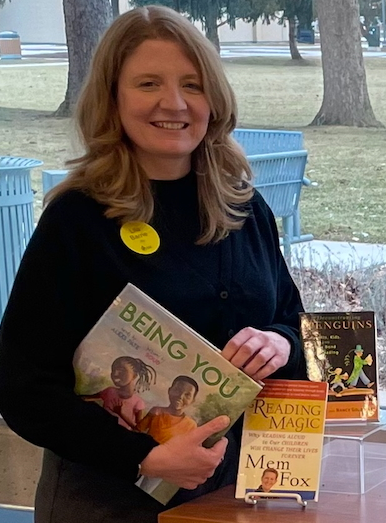 Lita Barrie: “I’m still having a lot of fun in Burlington.” What’s next? “
“Well, I’m still having a lot of fun in Burlington, so I have no I have no plans beyond, the work we are currently doing.
“I have the ability to work with the board, to really guide where the library is going; it’s just such a phenomenal time.”
Links:
Part 1 of this 2-part article.

|
|
 By Gazette Staff
By Gazette Staff Although agencies such as Ontario’s Special Investigations Unit (SIU) are empowered to be arm’s-length investigators, police sexual assault cases tend to be dropped, rarely result in criminal charges if examined and rarely result in convictions, according to the Brock University Assistant Professor of Political Science.
Although agencies such as Ontario’s Special Investigations Unit (SIU) are empowered to be arm’s-length investigators, police sexual assault cases tend to be dropped, rarely result in criminal charges if examined and rarely result in convictions, according to the Brock University Assistant Professor of Political Science.



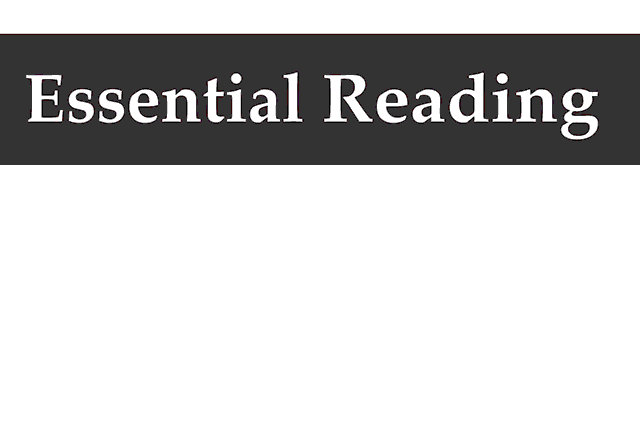





















 By Staff
By Staff













































